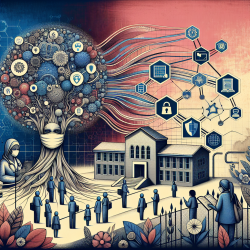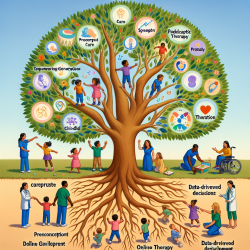Introduction
In the wake of the COVID-19 pandemic, the importance of effective information sharing in school settings during public health emergencies has been brought to the forefront. The research article, "Information Sharing in the School Setting During a Public Health Emergency," provides critical insights into how school practitioners can navigate the complexities of privacy laws such as FERPA and HIPAA to protect student health and safety.
Understanding FERPA and HIPAA
The Family Educational Rights and Privacy Act (FERPA) and the Health Insurance Portability and Accountability Act (HIPAA) are two pivotal federal laws that govern the privacy of student and patient information. FERPA applies to educational agencies receiving federal funding, while HIPAA covers healthcare entities that transmit health information electronically. School nurses typically fall under FERPA's jurisdiction, but there are instances where HIPAA may also apply, particularly in private schools or when interacting with HIPAA-covered entities.
Information Sharing During Public Health Emergencies
During public health emergencies, such as the COVID-19 pandemic, both FERPA and HIPAA provide certain waivers and exceptions that allow for increased information sharing. For instance, FERPA allows for the disclosure of personally identifiable information (PII) without parental consent during health or safety emergencies. Similarly, HIPAA permits the sharing of patient information for treatment purposes and public health activities without authorization.
Implementing Research Outcomes in Practice
Practitioners can enhance their skills by implementing the research outcomes presented in the article. Here are some practical steps:
- Stay Informed: School nurses should regularly update themselves on the latest guidelines and waivers related to FERPA and HIPAA during public health emergencies.
- Develop a Communication Plan: Collaborate with school administrators to create a comprehensive communication plan that outlines the process for information sharing during emergencies.
- Engage with Public Health Authorities: Maintain open lines of communication with local health departments to ensure timely and accurate information sharing.
- Participate in Professional Development: Engage in continuing education programs that focus on data privacy laws and public health crisis management.
Encouraging Further Research
While the article provides a foundational understanding of information sharing during public health emergencies, further research is encouraged to explore the long-term implications and effectiveness of current practices. Practitioners are urged to contribute to the body of knowledge by documenting their experiences and outcomes in managing public health crises within school settings.
Conclusion
Effective information sharing is crucial for safeguarding the health and safety of students during public health emergencies. By understanding and implementing the guidelines outlined in the research article, school practitioners can enhance their ability to respond to crises while adhering to privacy laws. For a more comprehensive understanding, practitioners are encouraged to read the original research paper.
To read the original research paper, please follow this link: Information Sharing in the School Setting During a Public Health Emergency.










